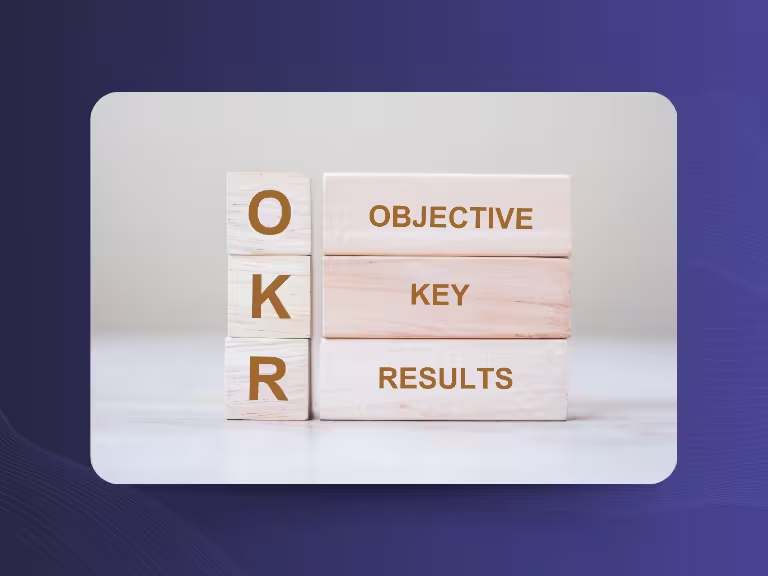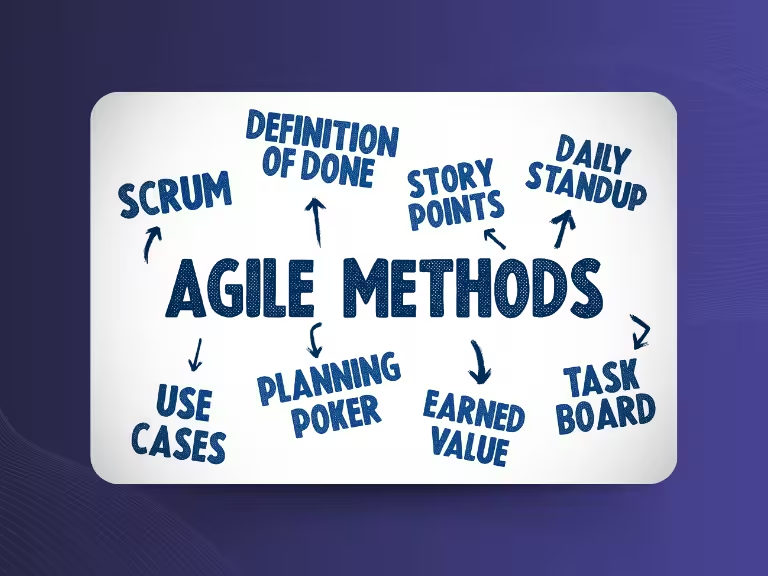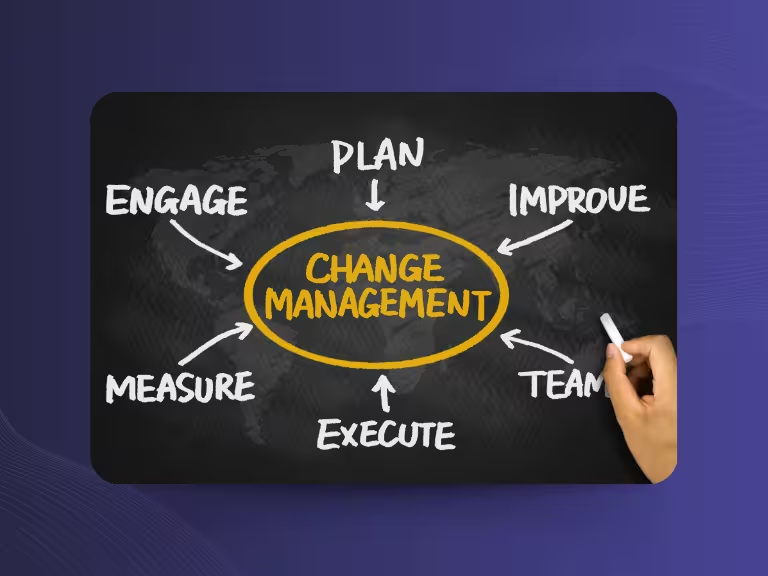Why Effective Leadership Communication is Crucial
Effective leadership communication is the foundation of successful business management. It determines whether teams work motivated and productively or whether they get lost in endless misunderstandings and conflicts. In an era where remote work, international teams, and digital communication have become the norm, the ability to communicate clearly and empathetically has become the most important core competency for leaders.
The effects of ineffective communication are devastating: misunderstandings lead to errors, lack of trust demotivates the best employees, and unclear messages cause productivity losses. A Gallup study shows that teams with a strong communication and feedback culture are up to 12% more productive than those without these structures.
However, modern work environments also offer new opportunities: digital tools enable effective communication even across great distances, and a conscious communication strategy can become a decisive competitive advantage. This article shows you how to master the fundamentals of leadership communication, successfully overcome current challenges, and build a trustworthy communication culture for the long term.
The Fundamentals of Effective Leadership Communication
Openness and Transparency as a Foundation of Trust
Openness and transparency form the heart of every successful leadership communication. When you communicate openly and honestly as a leader, you create psychological safety in your team. Employees feel valued and dare to contribute their own ideas or address problems.
Transparent communication specifically means that you regularly inform about important decisions, changes, and challenges. Imagine your company is going through a difficult phase: instead of staying silent or sugarcoating the situation, you honestly share where the problems lie and what steps are planned. This openness builds trust and motivates your team to find solutions together.
Trust-building happens through small but continuous gestures: regular updates on project progress, honest feedback on performance, and the willingness to admit your own mistakes. As Simon Sinek aptly emphasizes: "Leadership is not about being in charge. It is about taking care of those in your charge."
Creating Clarity – Communicating Goals, Expectations, and Processes Unambiguously
Clarity is the key to avoiding misunderstandings and conflicts. When your messages are formulated precisely and unambiguously, everyone on your team knows exactly what is expected of them. This not only reduces stress but also increases efficiency and team cohesion.
Use concrete methods to ensure your communication gets through: ask targeted follow-up questions to verify understanding and practice active listening. When starting a new project, don't formulate goals just generally ("We want to be successful"), but specifically ("By the end of March, we'll increase our customer satisfaction by 15% and reduce processing time by 20%").
The benefits of clear communication show quickly: teams work more focused, deadlines are met, and motivation increases because everyone understands their contribution to overall success. Especially in complex projects, this clarity is the guarantee for successful goal achievement.
Challenges and Solution Approaches in Leadership Communication
Dealing with Communication Disruptions and Conflicts
Communication disruptions are inevitable but not insurmountable. Typical disruptive factors are hierarchical barriers that prevent important information from flowing from bottom to top, or a lack of feedback culture that leads to frustration and resignation.
Successful solution strategies rely on multiple communication channels: besides formal meetings, you establish informal conversations, regular one-on-ones, and open office hours. Tools like Slack or Microsoft Teams can help create different communication levels - from quick updates to structured discussions.
A practical example: introduce weekly "Coffee Chats" where team members can casually discuss challenges. Combine these with structured retrospectives that systematically identify improvement potential. This way, you create a culture where problems are recognized and solved early.
Using the Diversity of Communication Styles as an Opportunity
Everyone communicates differently - some prefer direct, factual conversations, others need more time and a personal approach. As a leader, it's your job to recognize these different styles and adapt your communication accordingly.
Pay attention to both verbal and non-verbal signals: while one team member openly expresses feedback, another might show their concerns only through body language or restraint. Sensitize yourself to these differences and develop a feeling for the individual needs of your employees.
An inclusive communication approach considers this diversity and makes it a strength. When you appreciate and include different communication styles, you create a work climate where everyone feels comfortable and can unfold their potential. This leads to more creative solutions and higher employee satisfaction.
Extended Perspectives for Modern Leadership Communication
Intercultural Communication in International Teams
In a globalized work environment, intercultural competence has become indispensable. Cultural differences in communication can lead to significant misunderstandings if they are not understood and respected. While direct feedback is appreciated in some cultures, it is considered rude or disrespectful in others.
Concrete examples illustrate these challenges: in Asian cultures, communication is often indirect, and a "yes" doesn't automatically mean agreement but can merely express polite acknowledgment. German leaders who are used to communicating directly can misinterpret this as consent.
The solution lies in targeted training for cultural sensitivity and in developing adaptive communication strategies. Invest in intercultural training for yourself and your team, establish regular check-ins with international team members, and create space for open conversations about cultural differences. This investment pays off through improved collaboration and higher productivity.
Digital Communication as a Key Competency for Leaders
Digitalization has fundamentally changed the way we communicate. Platforms like Zoom, Microsoft Teams, and Slack have become indispensable tools whose effective use determines the success of teams. However, digital communication also brings new challenges.
Remote communication makes it harder to capture non-verbal signals and build interpersonal closeness. Employees can feel isolated, and the risk of misunderstandings increases. At the same time, digital tools offer new possibilities for efficient collaboration and documentation.
Successful digital meeting moderation requires special techniques: structure virtual meetings clearly, use interactive elements like breakout rooms or polls, and establish digital communication routines. Ensure regular informal conversations to strengthen interpersonal connections and use different communication channels for different purposes.
Sustainably Establishing a Feedback Culture
A vibrant feedback culture is the backbone of effective leadership communication. Constructive, timely, and appreciative feedback promotes the development of your employees and strengthens the relationship between leader and team. It's not just about criticizing but also about acknowledging positive performance and showing development opportunities.
Practical feedback techniques include using I-messages, active listening, and focusing on concrete behaviors rather than personality traits. Instead of saying "You are disorganized," you formulate: "I noticed that the last three reports were submitted late. Let's look together at how we can optimize your time management."
The positive impact of a lived feedback culture shows in higher employee motivation, better performance, and lower turnover. Teams that regularly receive constructive feedback develop faster and achieve their goals more efficiently.
Emotional Intelligence as a Success Factor in Leadership Communication
Emotional intelligence is the ability to recognize, understand, and respond appropriately to one's own and others' emotions. This competency is particularly important for leaders as it forms the foundation for empathetic communication and successful conflict resolution.
Daniel Goleman, the pioneer of emotional intelligence, emphasizes: "In emotionally intelligent leadership, managing your own emotions and understanding others' emotions creates a platform for successful communication and decision-making." Leaders with high emotional intelligence recognize stress signals in their employees early and can proactively support them.
Strategies for developing emotional intelligence include self-reflection, empathy training, and conscious perception of non-verbal communication. Studies show a clear connection between leaders' emotional intelligence and their teams' performance - emotionally intelligent leadership can increase team productivity by up to 20%.
Designing Communication Sustainably – Strategies for Long-term Success
Continuity and Consistency in Leadership Communication
Sustainable leadership communication is characterized by continuity and consistency. Regular communication creates trust and orientation for your team. Employees know when and how they receive important information and can rely on it.
Practical tools for continuous communication are communication guidelines that define standards for different situations, regular all-hands meetings for important updates, and structured team meetings with fixed agendas. These structures ensure that important information is not lost and everyone stays on the same page.
Successful companies establish sustainable communication structures: weekly standups for operational topics, monthly strategy meetings for long-term planning, and quarterly retrospectives to improve collaboration. These rhythms create reliability and promote a proactive communication culture.
Strategic Benefits of Effective Leadership Communication for the Company
Effective leadership communication is more than just a "nice-to-have" - it's a strategic success factor. The connection between good communication and business success is proven by numerous studies: companies with strong communication cultures report higher employee motivation, more innovation, and significantly lower turnover rates.
The investment in communication competencies pays off directly: teams work more efficiently, projects are completed more successfully, and employee satisfaction increases. This leads to a measurable competitive advantage, as satisfied employees are more productive and less likely to leave the company.
In this context, intelligent tools like Sally, an AI-powered meeting assistant, can help leaders make their communication even more efficient. Sally participates in meetings, automatically creates protocols and summaries, and ensures complete documentation of important conversations. This allows leaders to focus fully on content and interpersonal communication while administrative work is automated.
Conclusion: Effective Leadership Communication – More Than Just Words
Effective leadership communication is the foundation of successful business management and far more than just the exchange of information. It combines classic principles like openness, clarity, and trust with modern requirements of the digital and globalized work environment.
The most important core elements - transparency, clear goal setting, constructive feedback culture, intercultural competence, digital communication skills, and emotional intelligence - form a holistic system that must be continuously developed and adapted. Only this way can a communication culture emerge that ensures sustainable business success and high employee satisfaction.
The path to excellent leadership communication is a continuous learning process. Start with self-reflection on your current communication patterns, invest in continuing education, and use modern tools to optimize your communication. The investment in your communicative abilities is an investment in the long-term success of your team and your company.
Use the available resources: complete training in intercultural communication and emotional intelligence, experiment with digital tools like Sally for more efficient meeting documentation, and establish fixed communication routines. Your employees - and ultimately your business success - will thank you for it.

Test Meeting Transcription now!
We'll help you set everything up - just contact us via the form.
Test NowOr: Arrange a Demo Appointment





